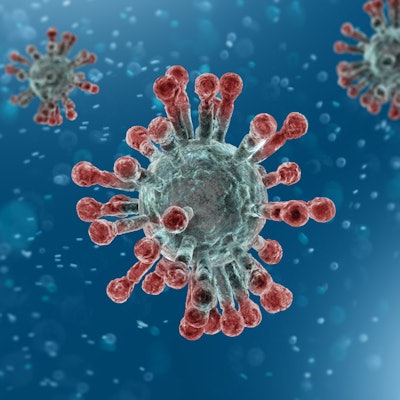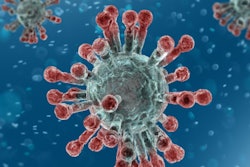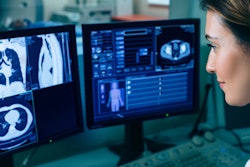
An artificial intelligence (AI) algorithm can achieve a promising level of accuracy for predicting the severity of COVID-19 based on several clinical features at presentation, according to research published on March 30 in Computers, Materials, & Continua. But adding CT findings to the analysis didn't help.
Using a small sample of over 50 patients with COVID-19 from two hospitals in China, a multinational team of researchers developed machine-learning models that achieved up to 80% accuracy for predicting development of acute respiratory distress syndrome (ARDS). The three most predictive features for ARDS were mildly elevated liver enzymes, body aches, and elevated red blood cells, according to the group led by Dr. Xiangao Jiang of Wenzhou Central Hospital in Wenzhou, China.
"Key characteristics predictive of diagnosis, including fever, lymphopenia, [and] chest imaging, were not as predictive of severity," the authors wrote. "Likewise, epidemiologic risks such as age and gender were not as predictive; all ARDS patients in this study were male, but most males did not develop ARDS."
Patients with COVID-19 may have an initial mild presentation, and it can be challenging to identify those who are at higher risk of developing ARDS, according to Jiang and colleagues from Wenzhou Central Hospital and Cangnan People's Hospital in Wenzhou, China, as well as New York University and Columbia University in New York City.
"This is particularly important in a novel and accelerating outbreak, when critical care resources and hospital beds are limited and clinicians are forced to make difficult decisions without past specific experience to guide clinical acumen," they wrote.
Seeking to develop a predictive AI model, the researchers used feature selection to algorithmically identify the clinical features that contribute the most to accurately predicting ARDS. These features, which were determined from analysis of 53 hospitalized patients with COVID-19, were then used to train several different types of machine-learning algorithms.
A dataset of 53 hospitalized patients with COVID-19 was used in the study. Five developed ARDS, but none died.
Of the 49 patients who received CT scans, 43 (87.7%) had ground-glass opacities or similar findings. The remaining six patients with normal CT scans did not develop ARDS.
The machine-learning model that was based on a support vector machine (SVM) algorithm produced the best performance, achieving 80% accuracy for predicting the severity of COVID-19. The following three clinical features were the most predictive:
- Mildly elevated alanine aminotransferase (ALT)
- Myalgias
- Elevated hemoglobin
The researchers noted that AI tools need to be developed iteratively and with the involvement of clinicians to ensure clinical applicability.
"Further refinement of these models with more data, from different settings with different spectrums of severity, would strengthen the predictive power of the model and allow it to be a useful tool in identifying early from the many with COVID-19 who will develop more serious disease and require closer clinical attention and resources, including early initiation of treatments, which will likely be in limited supply, if available in the future," they concluded.
Next on the researchers' agenda: expanding the models to deep-learning algorithms once they can obtain a larger sample of clinical data.




















